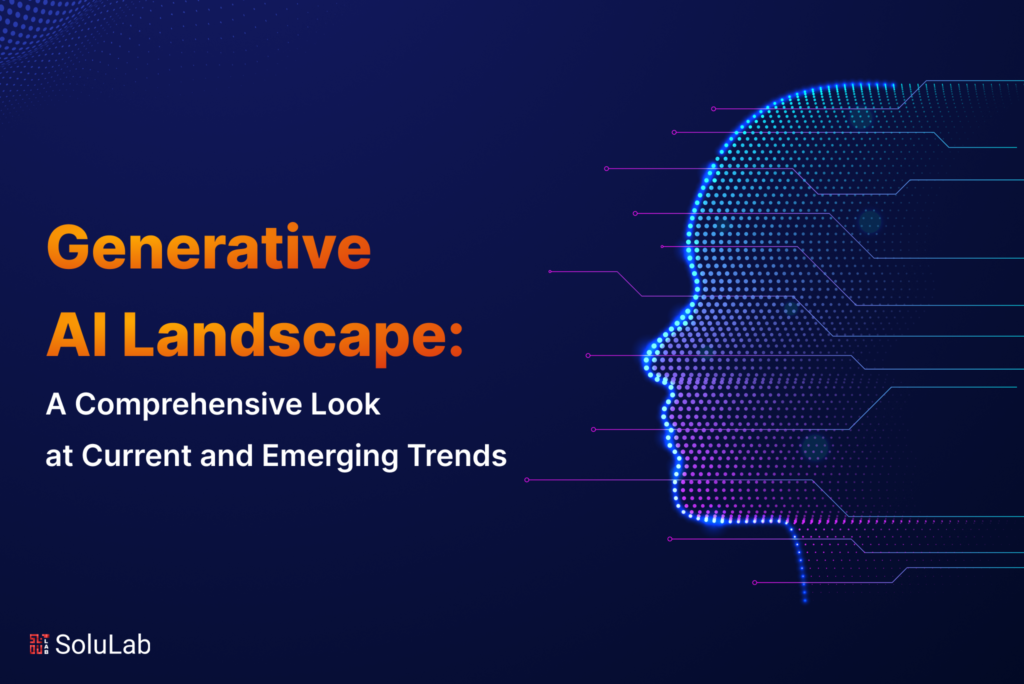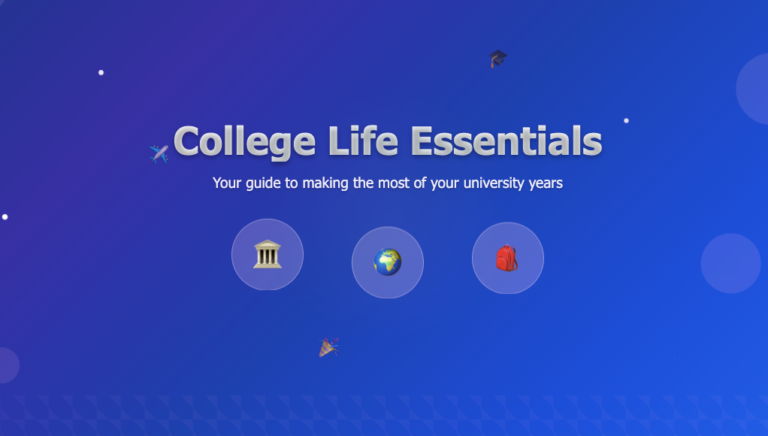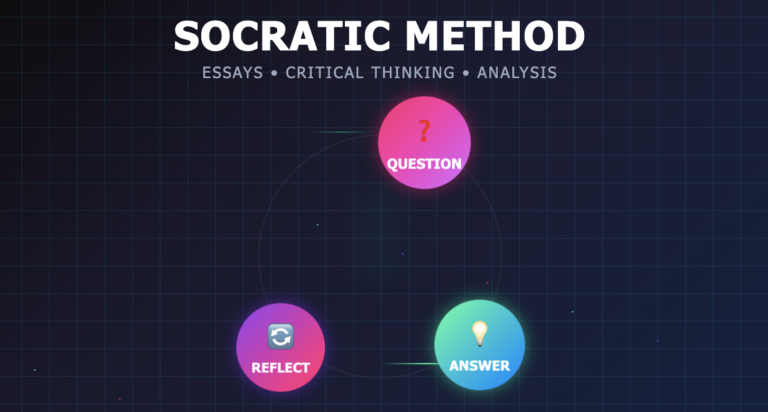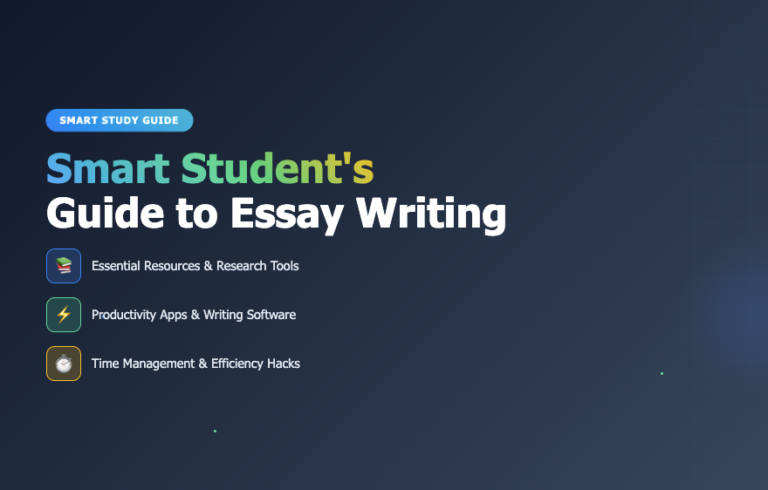
In recent years, generative AI technology has become prevalent across numerous areas. Generative AI employs natural language processing, enormous training datasets, and more advanced AI technologies such as neural networks and deep learning to produce unique content
Content generation models like ChatGPT are becoming more recognizable to both IT experts and laypeople, but this example of generative AI barely scratches the surface of what this technology can achieve and where it’s headed.
In this blog on the generative AI environment, we’ll look at what generative AI is capable of and how it arose and got so popular. We’ll also look at current trends in the generative AI competitive landscape and anticipate what customers might expect from this technology shortly.
What is Generative AI?
Generative AI is a subfield of artificial intelligence (AI) with an emphasis on creating algorithms and models that can generate fresh data that reflects human-created content. Unlike traditional AI systems that are designed for specific tasks and follow predefined rules, generative AI models can produce novel output by learning from large datasets. These models can create new content, such as images, text, music, videos, and more, without direct human intervention, making them particularly valuable for creative tasks and problem-solving in various domains.
At the heart of generative AI are advanced machine learning techniques, primarily Generative Models. These models learn patterns and structures from input data to generate new data that is statistically similar to the training examples. Among the most popular generative models are Generative Adversarial Networks (GANs), Variational Autoencoders (VAEs), and Autoregressive Models.
Generative Adversarial Networks (GANs): Introduced by Ian Goodfellow and his team in 2014, GANs consist of two neural networks – the generator and the discriminator – engaged in a game-like competition. The generator generates synthetic data, whereas the discriminator distinguishes between actual and false data. The generator learns to produce more realistic output over time as it tries to “fool” the discriminator, leading to the generation of increasingly realistic content. GANs have been exceptionally successful in generating high-quality images, art, and even synthesizing realistic human faces.
Read Also: Top 10 Generative AI Development Companies
Why is Generative AI Becoming More Popular Now?
Generative AI is growing rapidly for two reasons: 1) advanced neural networking algorithms have evolved, and 2) models and computational capacity are becoming more available. Google developed the groundwork for today’s generative AI when it originally announced the Transformer neural network design in 2017. With transformers, it became feasible to design higher-quality language models with more adjustable characteristics that could be trained more efficiently. Predictive text tools and primitive AI chatbots began to appear and mature around this period.
However, generative AI models stayed prohibitively costly despite the invention of transformers and associated neural networking architecture. Processing generative AI queries requires power resources that most businesses lacked or did not have exposure to. Beginning in 2022, computational power and the AI platform infrastructure layer started catching up to the processing needs for generative AI tools, allowing more firms to build generative AI solutions. More crucially, current generative AI developers will be able to expand their models to additional users at a reasonable cost.
Meanwhile, new neural networking approaches, such as diffusion models, appeared to lessen the entry hurdles for generative AI research. Because generative AI requires less energy and money, the generative AI ecosystem has grown to encompass several existing tech businesses and generative AI startups. The Generative AI landscape is evolving as current models are made available to more users via APIs and open-source software, resulting in the development of new applications and use cases regularly.
Leaders in the Generative AI Landscape
OpenAI is the undisputed leader in the generative AI sector, with a market capitalization of approximately $30 billion. OpenAI is primed for continuous expansion and third-party investments to drive that development, thanks to its tight collaboration with Microsoft, its newest GPT-4 model, its immensely popular ChatGPT application, and ongoing advances in other types of content production.
Amazon and IBM are also pushing the generative AI situation, but Microsoft and Google are the most visible of the main firms right now. Microsoft now has an advantage over Google in terms of content production, AI aid, cybersecurity, and coding support tools.
Google has long been a trailblazer in the generative AI arena. While Google’s actual release of generative AI tools has been delayed, its dedication to extensive testing and AI ethics implies that its planned solutions will be strong and successful when they are ultimately published.
Use Cases of Generative AI Landscape

The generative AI application landscape is vast and diverse, encompassing a wide range of use cases across various industries. Let’s explore some compelling applications that showcase the transformative power of generative AI:
- Personal Usage: Generative AI systems are often used for textual content production by recreational users; particular use cases include Q&A, travel and event planning, discussion, and research.
- Developer Tasks: Generative AI technologies may be used to forecast code sequences, assist with problem-solving, document existing code, and automate jobs.
- Art Generation and Creative Expression: Generative AI has revolutionized the world of art and creative expression. Artists can now collaborate with AI algorithms to produce unique artworks, blending human creativity with machine intelligence. Generative models like GANs can generate paintings, sculptures, and other visual art forms that captivate audiences worldwide.
- Natural Language Generation and Chatbots: Language models, such as the ones based on GPT-3, have opened up new possibilities in natural language generation. These models can write human-like articles, and stories, and even generate code snippets. Additionally, they power interactive chatbots that can engage in meaningful conversations and provide personalized assistance to users.
Read Also: Top 25 Generative AI Use Cases
- Image-to-Image Translation: Generative models are capable of translating images from one domain to another. For instance, they can convert sketches into realistic images or turn satellite images into maps. This technology finds applications in architectural design, urban planning, and style transfer in the fashion industry.
- Medical Image Synthesis and Analysis: In the healthcare domain, generative AI plays a vital role in medical image synthesis. It can generate synthetic medical images that augment limited training data, improving the accuracy of medical image analysis and assisting in disease diagnosis.
- Content Creation and Data Augmentation: Generative models are valuable for content creators, writers, and marketers. They can automatically produce blog posts, marketing materials, and social media content. Additionally, these models aid in data augmentation, generating synthetic data to expand training datasets for better model performance.
- Drug Discovery and Material Design: Generative AI is transforming drug discovery by generating molecular structures with desired properties, potentially speeding up the drug development process. Similarly, in material design, generative models assist in creating new materials with specific characteristics and properties.
- Video Generation and Editing: Advancements in generative AI have extended into the realm of video generation and editing. Models can generate realistic videos from limited input, alter video content in various ways, and even create deep fake videos for entertainment and special effects.
- Virtual Avatars and Virtual Reality: Generative AI is leveraged to create realistic virtual avatars for use in virtual reality (VR) and augmented reality (AR) applications. These avatars enhance immersive experiences and interactions within virtual worlds.
- Fashion and Product Design: In the fashion and product design industries, generative AI is employed to create unique and aesthetically appealing designs. It can assist designers in generating new clothing styles, accessories, and even automotive designs.
- Game Development and Level Design: Game developers utilize generative AI to create procedural content, such as levels, landscapes, and characters, providing players with more dynamic and engaging gaming experiences.
Read Our Blog: From Theory to Reality: Real-World Applications of Generative AI and GPT
Generative AI Applications Across Industries

As the generative AI application landscape continues to expand and evolve, various industries and departments have recognized the potential of this technology and integrated it into their operations. Let’s explore some of the key sectors where generative AI is making a significant impact:
-
Marketing and Sales
Generative AI is reshaping marketing and sales strategies by enabling automated content creation. Marketers use language models to generate engaging blog posts, social media content, and personalized product descriptions. Additionally, generative AI aids in predictive customer analytics, allowing businesses to target specific customer segments with tailored marketing campaigns, increasing conversion rates and customer engagement.
-
Customer Service and Contact Centers
In customer service, generative AI powers intelligent chatbots and virtual assistants capable of understanding and responding to customer queries in real time. These AI-powered agents provide instant support, improve response times, and reduce the workload on human agents, leading to enhanced customer satisfaction and efficient contact center operations.
-
Graphic Design and Video Production
Generative AI revolutionizes graphic design and video production, automating the creation of visual content. Graphic designers leverage generative models to generate diverse design ideas, logos, and branding materials. In video production, AI-driven tools assist in generating animations, special effects, and even automated video editing, streamlining the creative process and reducing production costs.
-
Healthcare
Generative AI in healthcare is employed for medical image synthesis and analysis. Models generate synthetic medical images, aiding in medical research, diagnostic accuracy, and training of healthcare professionals. Additionally, generative AI supports drug discovery by generating molecular structures with desired properties, accelerating the development of potential new drugs.
-
Pharmaceuticals
Pharmaceutical companies use generative AI to optimize drug discovery and development processes. AI-driven models analyze vast datasets to identify potential drug candidates, predict drug interactions, and simulate molecular structures. This streamlines the drug development pipeline, leading to faster and more cost-effective pharmaceutical research.
-
Biology, Chemistry, and Biophysics
Generative AI plays a crucial role in advancing research in biology, chemistry, and biophysics. It assists in protein folding prediction, generating molecular structures for drug design, and simulating complex biological processes. These applications have the potential to revolutionize drug development and our understanding of biological systems.
-
Entertainment
The entertainment industry leverages generative AI for content creation, personalization, and recommendation systems. Streaming platforms use AI algorithms to suggest relevant content based on viewers’ preferences, enhancing user experience. Moreover, generative AI powers interactive storytelling and game development, creating immersive virtual worlds and dynamic gaming experiences.
-
Legal and Government
In the legal and government sectors, generative AI aids in legal document analysis, contract generation, and natural language processing. AI-powered chatbots handle initial client interactions, assisting with legal inquiries and providing relevant legal information. Additionally, generative models assist in analyzing large volumes of legal texts and documents, streamlining legal research and decision-making processes.
-
Fashion, Retail, and E-commerce
Generative AI transforms retail industries and fashion by assisting in designing new clothing styles, accessories, and even store layouts. AI-powered recommendation systems provide personalized product suggestions to customers, improving cross-selling and upselling opportunities. In e-commerce, generative AI facilitates virtual try-on experiences, allowing customers to visualize products before purchase.
As generative AI continues to evolve, its applications across various industries will expand, unlocking new opportunities for automation, creativity, and enhanced customer experiences. The competitive landscape will witness fierce competition among tech giants and startups, driving further innovation and advancements in the field. The integration of generative AI in industries promises to reshape the future of work and revolutionize how we interact with technology.
Generative AI: The Future Landscape

Generative AI has emerged as one of the most promising and transformative fields within artificial intelligence. Over the years, this technology has demonstrated its capabilities in generating realistic content, sparking creativity, and revolutionizing various industries. As we look ahead to the future, the landscape of generative AI holds even greater potential, with advancements poised to reshape the way we interact with technology and unlock novel applications across diverse domains. In this exploration of the future generative AI landscape, we’ll delve into key trends and developments that are set to drive this field forward.
-
The Impact of Generative AI on Education
Teachers and parents are concerned because students have been using programs like ChatGPT to respond to homework problems or create essays. While these huge language models may not “know” the solutions to educational tasks, their training has enabled them to effectively anticipate a sequence of text for a variety of inputs, allowing students to utilize these tools to solve educational challenges. Of course, this might have a detrimental influence on students’ education; yet, if education institutions understand how to incorporate AI solutions as assistive tools for learning, it might also help students and instructors.
Similar to how classroom technology has evolved in the past — overhead projectors, anyone? – generative AI will need changes in instructors’ pedagogical approaches. For example, virtual learning is an intriguing and rapidly expanding field of generative AI. AI games and AI storytelling solutions are now available, providing teachers with instructional support and entertaining new methods to convey educational information to pupils.
However, there is still the problem of AI-based copying. Teachers can utilize one of the numerous free AI content plagiarism checkers that have recently been developed to counteract students’ inclination to rely on ChatGPT and related programs to perform their assignments. Though not perfect, these methods may successfully assess what percentage of information has been intentionally created. Users may expect these plagiarism-detecting programs to change as educational issues increase.
-
Virtual Reality and Generative AI
Video and 3D models are among the most rapidly expanding generative AI model forms today. This innovation will undoubtedly improve games and entertainment industries, but many people are more interested in the influence these models will have on virtual reality (VR) and augmented reality (AR) technologies — the metaverse. As they progress, these more advanced models will employ generative AI technologies to produce realistic experiences that make virtual reality seem real.
-
Career Changes and Opportunities
Generative AI technologies are already enhancing some sorts of work and may eventually replace certain types of employment. However, the ordinary working professional need not be concerned as long as they are prepared to pivot and expand on their abilities when employment demands alter. For example, many authors now concentrate on SEO writing, which is creating material that performs well in search results. This is the sort of material that generative AI models can generate through algorithmic training.
It will be crucial for writers to gain new strategic abilities, such as editing planning as well as quality assurance management of the content, and to collaborate with organizations that value human creativity and research as massive language models grow more capable. On the bright side, using these tools should make simple chores like taking notes and sending emails easier. You can simplify meeting documentation even further with an AI meeting note taker, which captures and organizes key discussion points automatically. Employees will be better able to concentrate on higher-value strategic tasks than ever before if they have time saved up as a result of these chores being removed from their workloads.
-
Applications for Embedded AI
A lot of major tech firms are presently experimenting with AI assistants that direct users’ web search experiences, including Microsoft. Additionally, several of the top generative AI businesses, including Cohere and Glean, provide consumers with corporate search solutions that are driven by AI. Many businesses will start to integrate enterprise search technologies into their websites and software applications as their features and functionalities continue to grow to improve the self-service user experience for both consumers and workers.
-
Contextualized Generative AI
The bulk of generative AI models available today contain language and time-based restrictions. As the need for generative AI increases globally, more and more of these providers will need to guarantee that their tools can accept inputs and produce outputs that are compatible with multiple language and cultural settings.
Furthermore, as time goes on, consumers will demand increasingly precise, real-time information from generative AI models. Although ChatGPT is now the most well-liked content creation and big language model accessible, it could soon lag behind rivals like Bard that are connected to the internet and provide replies based on up-to-date information. ChatGPT, in comparison, is presently using data that will expire in September 2021.
Bottom Line: The Generative AI Landscape
The generative AI landscape is a dynamic and rapidly evolving domain within artificial intelligence. This revolutionary field centers around developing algorithms and models capable of generating new content, encompassing images, text, music, and videos, among others. As generative AI matures, it is shaping industries and sparking innovation across a wide range of applications.
In the generative AI application landscape, several prominent use cases stand out. From art generation and content creation to medical image synthesis and drug discovery, generative AI is leaving its mark in diverse sectors. Creative industries, such as graphic design and video production, are benefiting from AI-generated content, automating tedious tasks and fostering creative collaborations between human designers and AI algorithms. In customer service and contact centers, generative AI-powered chatbots provide efficient and personalized support, enhancing customer experiences. Moreover, generative AI is transforming the entertainment industry, driving the creation of lifelike virtual avatars and dynamic storytelling experiences.
The generative AI competitive landscape is marked by intense competition among major tech giants, startups, and academic institutions. Companies like Google, Facebook, and OpenAI are at the forefront, investing heavily in research and development to push the boundaries of generative AI capabilities. Additionally, startups specializing in generative AI are emerging, providing niche solutions for specific industry needs. The pursuit of innovation and advancements in generative AI is supported by academic research, with research papers published at major AI conferences driving the field’s progress.
As the generative AI landscape continues to evolve, we can expect further breakthroughs in enhancing realism and creativity. Models will be more adept at generating content that closely resembles human creations, creating novel opportunities in virtual reality, gaming, and artistic expression. The responsible and ethical usage of generative AI will gain prominence, with a focus on mitigating biases, maintaining transparency, and safeguarding privacy. Furthermore, interdisciplinary integration with other AI technologies will lead to powerful synergies, opening up new frontiers in fields like healthcare, education, and human-computer interaction.
In conclusion, the generative AI landscape presents a thrilling frontier of innovation and transformation. With its vast array of applications and intense competition, the future of generative AI promises to shape industries, foster creativity, and revolutionize how we interact with technology. Striking a balance between ethical AI practices and cutting-edge advancements will be instrumental in harnessing the full potential of generative AI for a better, more interconnected world.
SoluLab, a leading Generative AI Development Company, offers comprehensive Generative AI development services tailored to diverse industries and business verticals. Their team of skilled and experienced artificial intelligence developers harness state-of-the-art Generative AI technology, software, and tools to craft bespoke solutions that cater to each client’s unique business needs. From streamlining business operations to optimizing processes and elevating user experiences, SoluLab’s Generative AI solutions are designed to unlock new possibilities for businesses, setting them apart from competitors. To leverage the power of ChatGPT, DALL-E, Midjurney, and more, businesses can hire Generative AI programmers from SoluLab.
Contact SoluLab today to explore how their expertise can help propel your business forward with custom, high-quality content that stands out in the market.
FAQs
1. What is generative AI, and how does it differ from other AI technologies?
Generative AI is a branch of artificial intelligence focused on developing algorithms and models that can generate new content, such as images, text, music, and videos, imitating and resembling human creations. Unlike traditional AI, which follows predefined rules for specific tasks, generative AI models can produce novel output by learning from large datasets. This ability to generate content makes it particularly valuable for creative tasks and problem-solving in various domains.
2. What are some of the popular applications of generative AI?
Generative AI finds applications across diverse industries. Some popular applications include image generation, text generation, medical image synthesis, drug discovery, content creation, language translation, virtual avatars in gaming and virtual reality, and fashion design. Additionally, generative AI is transforming customer service with intelligent chatbots and enhancing marketing strategies with automated content creation.
3. How is the generative AI competitive landscape evolving?
The generative AI competitive landscape is characterized by intense rivalry among tech giants, startups, and research institutions. Major companies like Google, Facebook, and OpenAI invest heavily in research and development to advance generative AI capabilities. Startups are also emerging, providing specialized generative AI solutions for various industries. Academic institutions and research labs contribute significantly through published papers and open-source initiatives, driving further innovation.
4. What can we expect from the future of generative AI?
The future of generative AI holds immense promise. Advancements in deep learning techniques and access to large datasets will lead to even more realistic and creative content generation. Ethical AI practices will gain prominence, focusing on mitigating biases and ensuring transparency in AI decision-making. Additionally, interdisciplinary integration with other AI technologies will result in powerful synergies and new applications across industries such as healthcare, education, and entertainment.
5. How can businesses and industries benefit from generative AI?
Generative AI offers numerous benefits to businesses and industries. It can streamline content creation processes, augment creativity, and enhance customer experiences through personalized interactions. In healthcare, generative AI aids in medical image analysis, disease diagnosis, and drug discovery, leading to improved patient care and treatment options. Moreover, generative AI can revolutionize marketing strategies, virtual reality experiences, and product design, providing companies with a competitive edge in the market.






